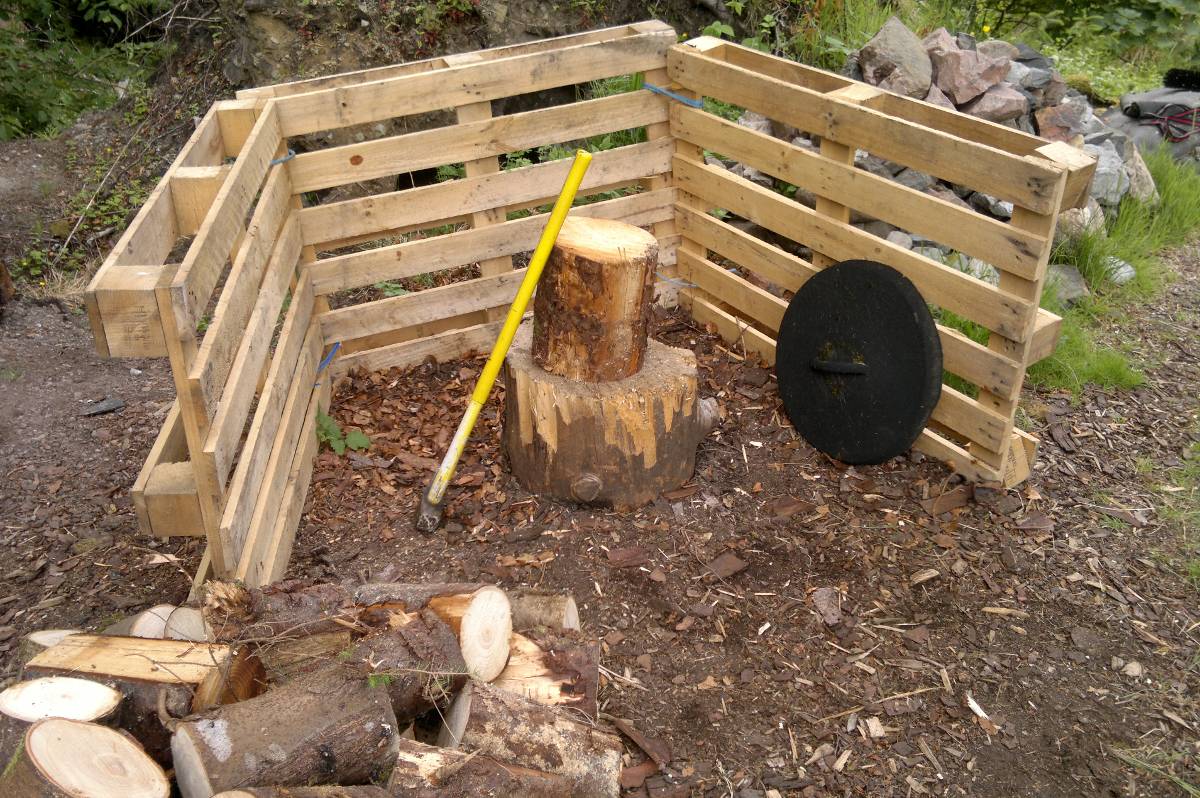This is the first in a series of posts showing my ideal wood processing set up. We use a wood-burning stove for about three-quarters of the year, only leaving it idle during the summer months. To supply the stove requires spending a lot of my spare time processing wood. Processing wood includes all the jobs from cutting down trees to putting the logs in the stove. In recent winters we have had some severe storms which created a lot of windblown trees, adding to the requirement for processing wood efficiently.
Disclaimer: this post describes what I do to process wood, but in no way is advice which you should follow. If you hack your leg off doing something similar, don't come running to me.

The chopping block and corral are the simplest part of my wood processing set up, and can be put together in a few minutes. I prefer to have the chopping block made from beech or sycamore as they both provide a nice solid base. The block shown in the photograph is from a fairly large Sitka spruce (picea sitchensis), as I didn't have any suitable beech or sycamore available. Regardless of the type of wood it is important to dig the block into the ground at least 10cm as that prevents it moving when chopping the logs.
The black bin lid, shown in the photograph, hasn't been carelessly left lying around, it is required for keeping the top surface of the chopping block dry. A soft wood like spruce soaks up rainwater very effectively, particularly once the surface is roughened due to continual chopping.
I added the corral around the chopping block because I was fed up retrieving logs which flew off after I split them. Just beyond the pile of stones there is a burn, and a surprising number of logs would land there, soaking up water. The corral is also useful as it keeps all the split logs close together and provides a resting place for the splitting maul when I am setting up the next log. Unfortunately, the corral doesn't do anything about logs that fly towards me and hit me on the shin. A nice sharply angled log hitting my shin at speed happens about once or twice a year (and that is once or twice too often). The next time it happens I might follow through on my idea of getting shin guards of the type footballers wear.
The corral is made from three identical pallets with the top surfaces facing-in towards the chopping block. The touching edges of the pallets are tied together (top and bottom) using 60cm lengths of polypropylene rope (cord). That's it! Total cost was pennies. The pallets were retrieved for free from the local recycling centre and the rope was bought as a 50m coil for less than £10.
This is the first part of a series of posts on my wood processing set up. Next in the series will be about my device which was nicknamed The Medieval Contraption.